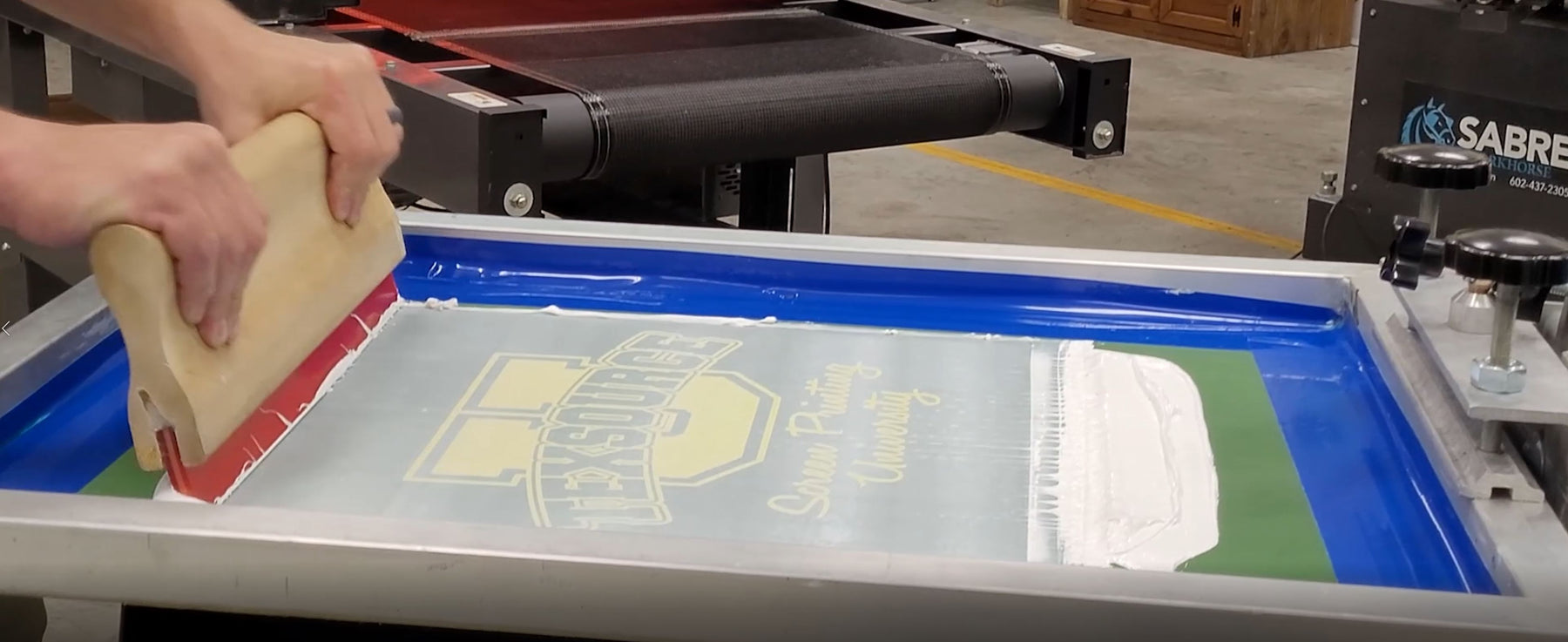Since 1997
Since 1997

What’s the difference between new screen printers and established pros? The pros have made - and learned from - hundreds of mistakes over the course of their careers. What you don’t know can hurt your print shop’s bottom line, cost you clients today and potential revenue in the future. Simple steps and procedures can save you time, money and prevent disasters before they ever happen. Here’s the most common problems you need to watch out for.
Screen printer, know thyself
Get comfortable with your limitations. Get comfortable with your equipment’s limitations. More than once Texsource Georgia Sales Representative Scott Thompson has seen new print shop owners line up clients and complex multi-color jobs before they’ve ever actually printed their first production shirt.
“You’re probably going to make a lot of mistakes,” Thompson said. “I’d advise printing that one color middle school field day t-shirt before tackling a six-color job with reflective ink. There’s a lot of ground between what you know and what you don’t.”
You’d Be Amazed…
“At the number of printers who start a job and fail to even glance at the tag of the shirt they’re printing,” according to Thompson. They could sidestep many issues, he said, by reading and understanding the tags and labeling on their supplies before they ever start a print job.
Double-check to ensure each of the shirts you’re about to print match your work order and that the white ink you are about to pour on the screen is matched to the appropriate substrate.
You’re Never Too Far Behind To Test Print
The clock is ticking. You’ve got shirts on the press that need to be out the door soon, so you take the calculated risk to skip test printing. Don’t do it. Build in the extra time to test your process.
“You may be using a new shirt and ink combination, or maybe the company you’ve always bought your shirts from has switched to a lower quality mill,” according to Texsource Georgia Sales Representative Jeff Board. “Suddenly you’ve got dye migration issues that you could have spotted early if you’d just tested them.”
Don’t trip over dollars to pick up nickels
One example? Printers will often forgo using tape designed for screen printing in favor of whatever is on hand or is the lowest cost, according to Harvey Cole, a Texsource sales representative serving Virginia. 
Harvey Cole, the Man himself!
Sometimes that will work. Sometimes you’ll end up with adhesive sticking to the top or bottom of the screen, which throws another hitch in the screen reclaiming process.
Don’t Wash Away Money
When using a dip tank to speed up your screen cleaning and reclaiming process don’t move a screen immediately from the tank to the washout booth. Allow the cleaning chemicals to drain back into the tank for up to 30 seconds before moving your screen to a washout booth.
The benefits will be two fold, according to Texsource’s Ryan Bolin. The chemicals will have extra time to continue loosening the ink and emulsion from the screen and you’ll recapture more of the solution than simply sending it down the drain.
You can allow the screens to soak in cleaning solution too long, however, leading to situations where emulsion peels away and ends up at the bottom of the dip tank. That sludge will continue to degrade your expensive cleaning solution.
Help. My ink is curing on my screen!
Ronnie Cannon, Texsource’s North Carolina sales representative, has heard this complaint so many times over the course of his two decades in the screen printing business that he knows what the problem is before it’s even described to him.
Printers who attempt to launch their venture on a shoestring budget (no shame - we’ve all been there) will often attempt to pair a one color, one pallet press with a flash curing unit.
The problem? Such an arrangement often leads to climbing temperatures on both the pallet and in the ink on the screen.
“If they have to slow down to keep those temperatures lower, it ends up taking all weekend to run a 24-piece job in the garage,” Cannon said. “If they attempt to speed through that run, they’ll end up with the flash curing unit right by their press, and both their pallet and the ink end up smoking hot. That’s why we recommend at least a two-color machine if you’re going to be flashing.”
You Need a Record of Everything
When did a customer submit an order? Where did you order the materials used for printing a particular shirt? Which employee printed that shirt? Do you have a record of every change requested by the customer? Did you count and confirm each shirt ahead of delivery, and did your customer do the same?
“You need records of everything,” Board said. “The last place you want to find yourself is going back, reshooting screens again and printing an additional eight or 10 shirts. Maybe your customer actually ordered the wrong amount but they’re trying to say you shorted them on the order. Keep records of everything.”
Leave a comment